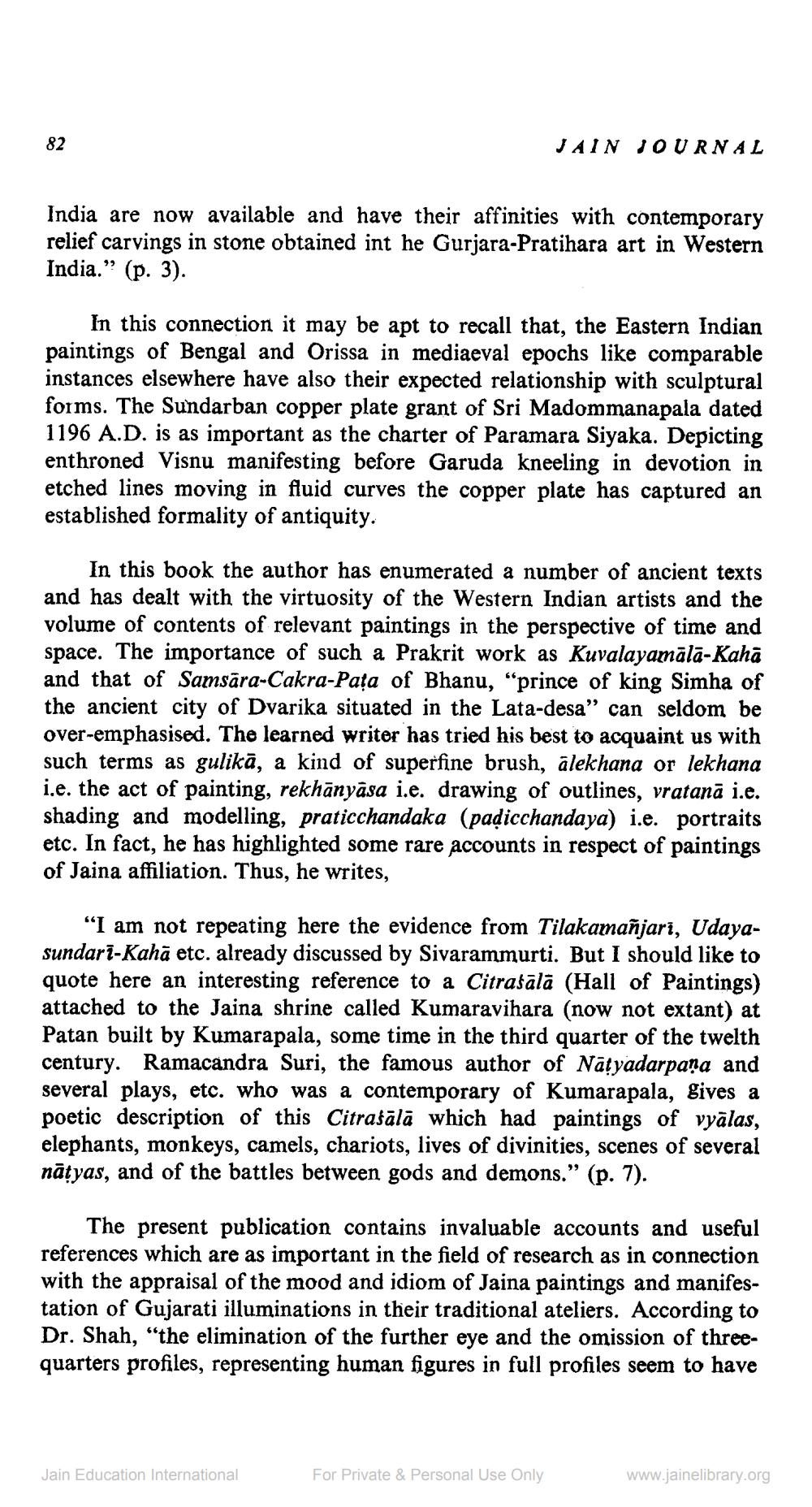Book Title: Jain Journal 1978 10 Author(s): Jain Bhawan Publication Publisher: Jain Bhawan Publication View full book textPage 4
________________ 82 JAIN JOURNAL India are now available and have their affinities with contemporary relief carvings in stone obtained int he Gurjara-Pratihara art in Western India.” (p. 3). In this connection it may be apt to recall that, the Eastern Indian paintings of Bengal and Orissa in mediaeval epochs like comparable instances elsewhere have also their expected relationship with sculptural forms. The Sundarban copper plate grant of Sri Madommanapala dated 1196 A.D. is as important as the charter of Paramara Siyaka. Depicting enthroned Visnu manifesting before Garuda kneeling in devotion in etched lines moving in fluid curves the copper plate has captured an established formality of antiquity. In this book the author has enumerated a number of ancient texts and has dealt with the virtuosity of the Western Indian artists and the volume of contents of relevant paintings in the perspective of time and space. The importance of such a Prakrit work as Kuvalayamālā-Kaha and that of Samsāra-Cakra-Pața of Bhanu, "prince of king Simha of the ancient city of Dvarika situated in the Lata-desa” can seldom be over-emphasised. The learned writer has tried his best to acquaint us with such terms as gulikā, a kind of superfine brush, alekhana or lekhana i.e. the act of painting, rekhānyāsa i.e. drawing of outlines, vratanā i.e. shading and modelling, praticchandaka (padicchandaya) i.e. portraits etc. In fact, he has highlighted some rare accounts in respect of paintings of Jaina affiliation. Thus, he writes, "I am not repeating here the evidence from Tilakamañjari, Udayasundari-Kahā etc. already discussed by Sivarammurti. But I should like to quote here an interesting reference to a Citraśālā (Hall of Paintings) attached to the Jaina shrine called Kumaravihara (now not extant) at Patan built by Kumarapala, some time in the third quarter of the twelth century. Ramacandra Suri, the famous author of Natyadarpaņa and several plays, etc. who was a contemporary of Kumarapala, gives a poetic description of this Citraśālā which had paintings of vyālas, elephants, monkeys, camels, chariots, lives of divinities, scenes of several nātyas, and of the battles between gods and demons." (p. 7). The present publication contains invaluable accounts and useful references which are as important in the field of research as in connection with the appraisal of the mood and idiom of Jaina paintings and manifestation of Gujarati illuminations in their traditional ateliers. According to Dr. Shah, "the elimination of the further eye and the omission of threequarters profiles, representing human figures in full profiles seem to have Jain Education International For Private & Personal Use Only www.jainelibrary.orgPage Navigation
1 2 3 4 5 6 7 8 9 10 11 12 13 14 15 16 17 18 19 20 21 22 23 24 25 26 27 28 29 30 31 32 33 34 35 36 37 38 39 40 41 42
